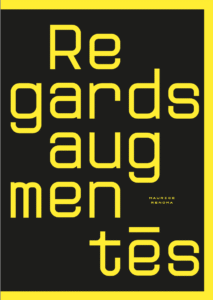« A French youth » is a story that takes the opposite view to stereotypes and prejudices regarding French working-class areas and people who are suffering. It’s a story about a certain misunderstanding of French history : most of French citizens have foreign roots and their personal stories are marked by migration. But they are suffering from a poor public image. And the January 15th terrorist attacks in Paris have contributed to their stigmatization.
Nowadays, the French youth living in the working-class areas is for a large part Muslim and from the African continent. They build the multicultural French society. These young people are an evidence of present times. They are an indication for the future. The documentary “ A French youth” doesn’t want to give a naïve and optimistic picture of reality. Its main aim is to deal with reality, shed light on these unknown faces and share the everyday life of youth from French poor areas. Following an imaginary line running from the Northern districts of Amiens to the Northern neighbourhoods of Marseille, through suburbs in Paris and Lyon, “A French youth” picks up, step by step, through encounters, the issues young people have to face.
Following several personal itineraries, for a few weeks, we live with them side by side in their environment, and share their joy and their sorrow. “A French Youth” documents a History of the present time.
The northern districts of Amiens are characterized by the presence of white people and a melting pot. Emmanuel is 23 years old. He has just got out of jail after serving a 5 year sentence.
Now he returns to his family flat, in the “Pigeonnier” area. He’s back with his mother and sister. Emmanuel picks up the old habits of his neighborhood’s building n°9, places where he is also used to killing time with his childhood fellows. This is the story of a young man, who first was rejected by the educational system, who was then unable to find a job, but still struggles to find his way. However, a few months later, Emmanuel disappears. No one knows where he is. A new Court decision has decided he would shortly be forced to return to prison. He couldn’t cope with the idea and run away.
The Paris suburbs are separated from the national capital by a super-ring road round the city. It is an impassable frontier for young people from suburbs. Ali is 15. He was brought up in a single parent and modest home and left school early. Now, he aimlessly wanders in his neighborhood of Villetaneuse (Seine-Saint-Denis department). This is the only place where he feels safe. He is afraid to get in trouble with young people from neighboring areas and doesn’t feel comfortable anywhere else. It is a physical and a mental barrier that afflicts a number of young people from the suburbs. Mehdi, 19, lives in Épinay (Seine-Saint-Denis). He too dropped out of school at 16 without a diploma. He too wanders in his district. Under pressure from his mother, Mehdi has decided to take training conducted by a local association. This organization offers him refresher courses, helps him define his own targets and build his professional project.
This gloomy scene must not overshadow opportunities. Saber, 23, lives in Les Mureaux, a distant suburb, south of Paris. He also had training but he symbolizes creativity, excellence and use of initiative within this youth. Indeed, he is a new entrepreneur, and set up a street trading food company. Furthermore, Saber’s aim is to leave his neighbourhood and the life that goes with it.
Indeed, many young people from suburbs constantly feel the need to leave it. “Les Halles” is a shopping centre in the heart of Paris connected by public transport to the suburbs. Every week-ends, large groups of young boys, girls, lovers come in from their neighborhood in search of new horizons and tranquillity.
The Lyon suburbs have been the scenes of riots since the 80’s. No one expects anything any more from the political system. The youth from these suburbs have given up expecting anything from left-wing parties, unlike the previous generation who had hopes to achieve a better life. The present generation feel that they have to take care of their future themselves, including by using unlawful ways. The divorce is pronounced with the Republic and the system in place which they face.
Béné, 15, lives in Vaulx-en-Velin, south neighborhood. Even if he is strongly attached to his regional identity, he turns his back to the values and questions the legitimacy of the Republic. The void tends to be filled by religions: Islam and evangelical Christianity. Wafa, 23, lives in Saint-Étienne, a few kilometers away. She has a deep faith. She has worn her hijad for 3 years and she turned her attention to her Muslim community. This is also in her view an appropriate answer to the way women are considered in her district, a response to the phoney promises from society and its market goals.
The Northern part of Marseille has been the subject of media spotlight due to a series of murders linked to drugs cartels. But there’s more to this youth’s everyday life than what these highlights show.
It’s true that many of them experience a routine violence from an early age.
Young inhabitants from Pyat quarter called “Guirri” formed a gangsta rap band. The lyrics of their songs describe young dealers’s everyday life. They are aged between 17 and 22. They run their own drug deals and they are familiar with street fights, but at the same time they try to build a future for their rap group. They are even models for children, like Béné from Lyon who follows them on Facebook. A lot of young people are more or less involved with unlawful activities. Sometimes, they are involved in smuggling narcotics for a few euro but the rest of the time, they attend school or try to find employment with difficulty.

